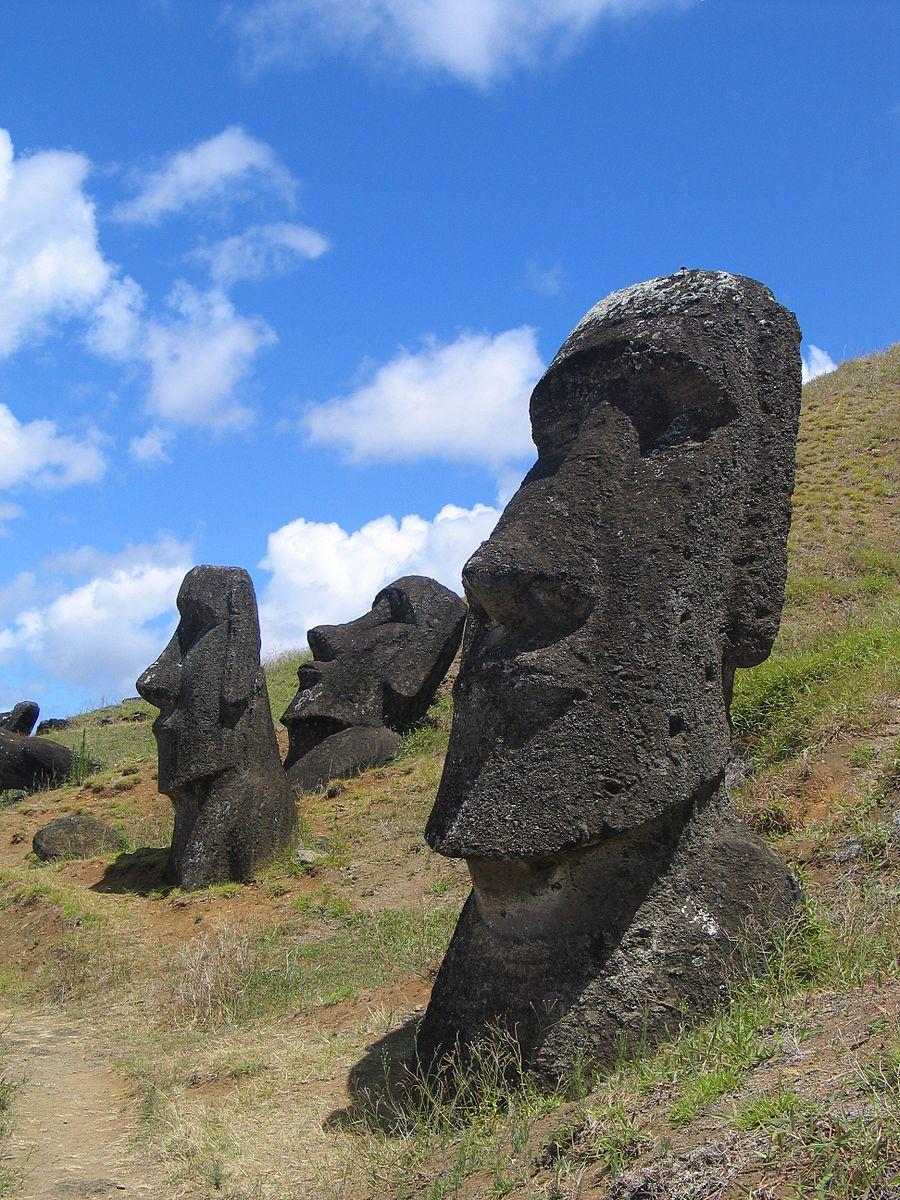6.14: Rapa Nui Island (7th CE est. – ongoing)
- Page ID
- 31840
The most remote island in the world is Rapa Nui (named Easter Island by the Europeans), over two thousand miles from any other island or mainland. People first arrived in the 7th century after crossing the Pacific Ocean in dugout canoes from Polynesia. When they landed on the 164 kilometers square island, it was heavily forested, had sandy beaches for landing canoes, and the sweet potato they relied upon for food grew successfully in the volcanic soil.

The Rapa Nui people are known for their moai, the carved statues (6.69) from the volcanic rock in the hills. The stone-age culture of Rapa Nui shaped monolithic, somewhat human figures of their ancestors. The tallest moai is a record ten meters high and weighed over 80 tons. There are 887 statues carved in the minimalist style (6.70) of sculpture with larger than life heads, weighty brows, long broad noses, strong chins, and thin lips that sit on top of a whole body with low-relief carvings of arms. The members of each clan created moai's and then moved the statues closer to the shoreline, some moved over eight kilometers.
There are different theories of how they moved the moai. As we have seen in other civilizations, who had to move large stones, the two top theories are entirely different from each other. The first theory believes the moai were laid on their back and rolled on logs down the hills to their final resting spot. Although this theory has shown to work, the deforestation of the island limits the amount of wood available to move the moai. The second theory hinges on “walking the moai,” which was a story passed down through generations and provided the clues for the current scientist to investigate. A theory was proposed that the moai were in an upright position and tied to ropes. With three teams of people guiding the statue, they walked the moai to its new position by pulling on the ropes side to side.

The exploitation of the natural resources on the island caused difficulties of the people of Rapa Nui when the island was deforested over time for homes, fires, and canoes and without wood for boats, they were literally trapped on the island. However, invasions by Europeans and South Americans, diseases and competition for the resources caused the culture to change and collapse.


